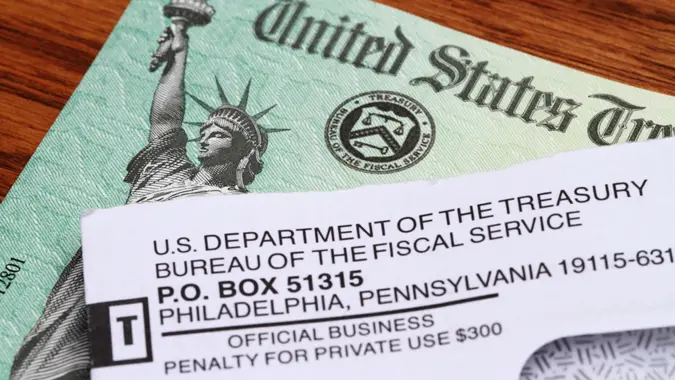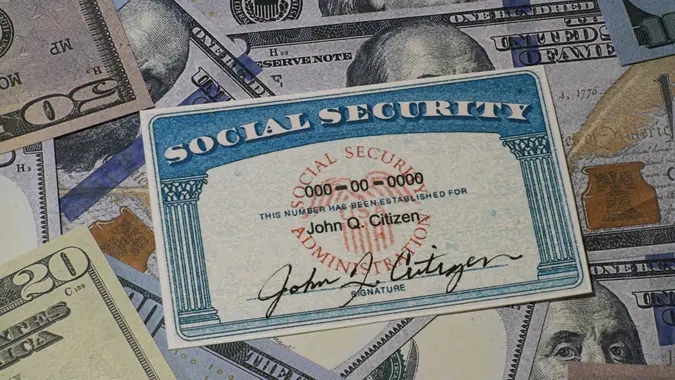About To Start Earning Social Security in 2026? Avoid These 3 Mistakes

Commitment to Our Readers
GOBankingRates' editorial team is committed to bringing you unbiased reviews and information. We use data-driven methodologies to evaluate financial products and services - our reviews and ratings are not influenced by advertisers. You can read more about our editorial guidelines and our products and services review methodology.

20 Years
Helping You Live Richer

Reviewed
by Experts

Trusted by
Millions of Readers
The Social Security Administration (SSA) estimated that nearly 71 million Americans would receive Social Security benefits in 2026, with an average monthly benefit of $2,057 for retirees.
If you plan to start receiving benefits next year, you’re probably looking forward to the extra income that supplements your retirement savings and any paychecks you still get. But if you’re unaware of some important rules, you might be surprised by a reduced Social Security check or tax bill.
Here are three mistakes you should avoid making as a new Social Security beneficiary.
Not Understanding the Earnings Test
According to a 2025 Transamerica Institute study, 52% of respondents reported they would work in retirement. While even a part-time job offers financial and personal benefits, there’s a catch to consider if you’ll receive Social Security payments before your full retirement age.
The SSA has an earnings test that temporarily reduces your benefits if you exceed a certain income limit, which varies depending on the year and your age. Here’s how it works based on the 2025 limits, which you can expect to change for 2026:
- During the years before you reach full retirement age, you can make $23,400 before the SSA takes away $1 for every $2 you make beyond that amount.
- During the year you reach full retirement age, that limit goes up to $62,160, and the SSA takes away $1 out of every $3 you make beyond that amount.
- The earnings limit no longer applies once your full retirement age month arrives.
If you’re a younger retiree with a high income through work or self-employment, this is a major drawback to taking your Social Security benefits early. The good news is that any earnings reduction is temporary, and the SSA will eventually pay you a higher adjusted benefit amount.
Not Preparing for Potential Taxes
You may be unaware that you’ll owe federal taxes on part of your Social Security benefits if half of your payments plus other included income sources (such as wages, pension and capital gains) exceed an annual limit that depends on your filing status. You’ll need to set aside money if you’re in this situation.
Based on the current IRS rules, a single taxpayer would owe taxes on 50% of their benefits if their combined income sources total $25,000 to $34,000 and 85% with an income exceeding that. Married taxpayers filing jointly reach the 50% threshold with a combined income of $32,000 to $44,000, and they’ll pay taxes on 85% of their benefits with a higher combined income.
Some good news is that the One, Big Beautiful Bill includes some tax relief with a $6,000 senior deduction per taxpayer aged 65 and older. However, an IRS release noted that a phase-out applies if your modified adjusted gross income is more than $75,000 (single filer) or $150,000 (joint filer).
Not Accounting for Medicare Premiums
You might believe that your Medicare coverage starting at age 65 is free, and that’s usually true for Medicare Part A (hospital insurance). However, you’ll need to pay a monthly premium out of your Social Security check if you enroll in Medicare Part B for other eligible medical services. That makes it important to prepare your retirement budget now.
The Centers for Medicare and Medicaid Services showed that monthly premiums for Medicare Part B in 2025 ranged from $185.00 to $628.90, depending on your income. While the 2026 prices are unreleased, expect them to increase and further reduce your upcoming Social Security checks. Also, if you decide to forego enrolling to save money, keep in mind you’ll often end up owing a penalty.
More From GOBankingRates
- Nearly 1 in 3 Americans Hit by a Costly Holiday Scam, Norton Survey Shows -- How To Avoid This
- Here's What the Average Social Security Payment Will Be in Winter 2025
- How Middle-Class Earners Are Quietly Becoming Millionaires -- and How You Can, Too
- The Easiest Way to Score $250 for Things You Already Do
 Written by
Written by  Edited by
Edited by 


























